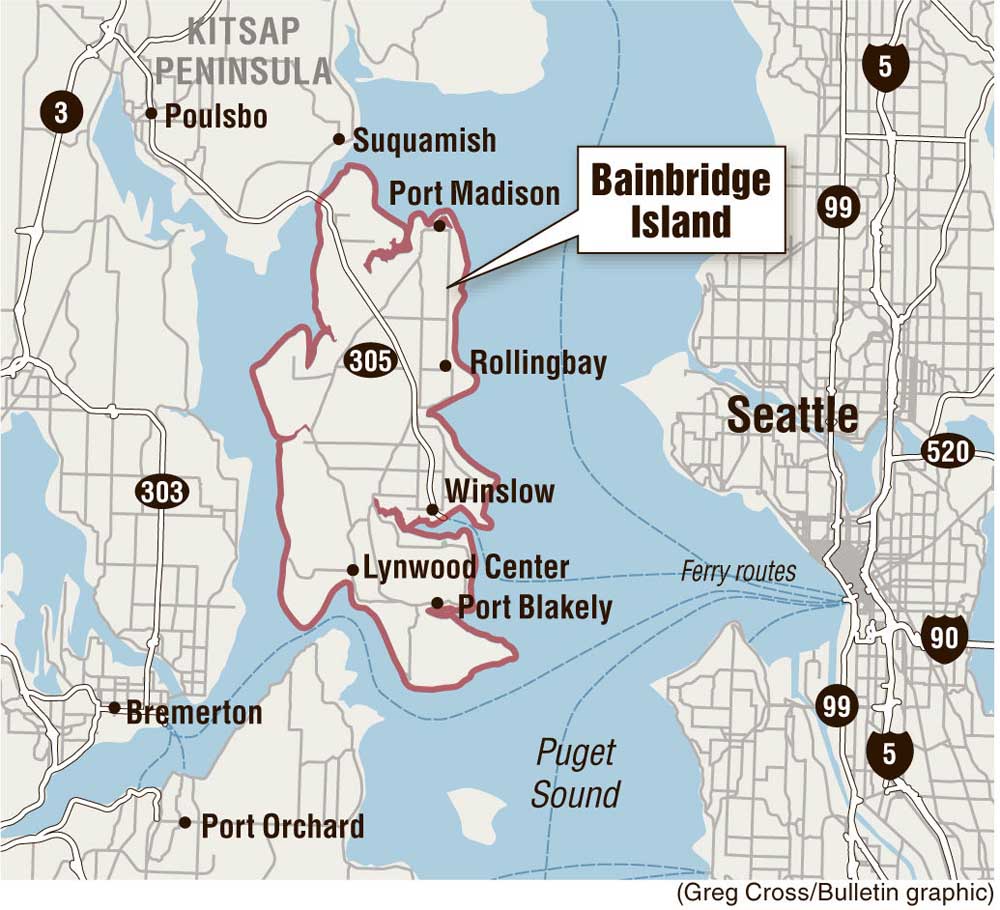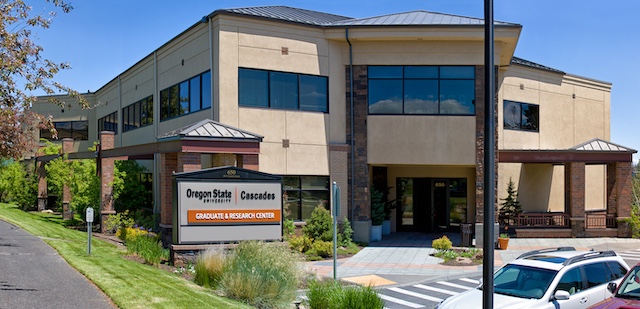Travel: Bainbridge Island, Washington
Published 6:26 am Wednesday, March 22, 2017

- Travel: Bainbridge Island, Washington
BAINBRIDGE ISLAND, Washington —
Seventy-five years ago this month, hundreds of Americans of Japanese ancestry were herded from their island homes at bayonet point and forced onto a ferry to cross Puget Sound. They were loaded onto trains in Seattle and taken to a “relocation center,” as World War II internment camps were euphemistically called, in Manzanar, California.
Trending
The date was March 30, 1942. These men, women and children — two-thirds of whom had been born in the United States, and who were thus U.S. citizens — were the first of more than 110,000 Japanese Americans to be incarcerated at sites across the West until months after World War II had ended.
The event has not been forgotten. In fact, surviving internees and their descendants will gather again in 11 days to commemorate the date at the Bainbridge Island Japanese American Exclusion Memorial, a national monument that opened to the public in July 2011.
“This is an American story, not a specifically Japanese one,” said Clarence Moriwaki, a former radio talk-show host and public relations consultant who serves as president of the Bainbridge Island Japanese American Community. “As Americans, I hope we never again succumb to the fear and prejudice of our past.”
Although additional structures are planned, the initial story wall, an undulating fence of rock and native cedar that extends exactly 276 feet (1 foot for each Bainbridge Japanese) toward the former Bainbridge ferry dock on Eagle Harbor, is remarkably moving. It descends down a gentle slope beside Pritchard Park opposite the township of Winslow, where the ferries that continue to link the island with Seattle now arrive and depart.
Standing about 8 feet from a gravel skirt to the eaves of a shingled roof, the wall bears the names of every person of Japanese heritage who lived on Bainbridge at the time. Their names are organized by family group and interspersed with thematic friezes that depict their lives.
At the head of the wall are written three Japanese-language words that Moriwaki said are at once “a hopeful message and a call to action.”
Trending
“Nidoto nai yoni,” they read. “Let it not happen again.”
Settling in
Most of Bainbridge’s 26,000 residents commute by ferry to jobs in downtown Seattle, a 35-minute ride across Elliott Bay. The ferries, Tacoma and Wenatchee, shuttle almost hourly throughout the day except in the very wee hours of the morning. There’s also highway access via state Route 305 from the Kitsap Peninsula near Poulsbo.
About 10 miles long and 5 miles wide, Bainbridge Island was once heavily forested. Pockets of woods remain today. It was traditionally home to the Suquamish Indian tribe, whose leader, Chief Sealth, gave his name to the City of Seattle in the 1860s. Sealth’s well-marked grave stands on the Suquamish Reservation on the Kitsap Peninsula, just north of the Agate Pass Bridge.
Logging and shipbuilding became the traditional industries after white settlement. Western red cedars were especially in demand for the masts of ships. Port Blakely, near the southeast corner of Bainbridge Island, boasted the world’s largest sawmill under one roof during the final decades of the 19th century. Port Madison, on the north end of the island, was its largest settlement until Winslow was incorporated in 1947.
The first wave of Japanese immigrants, who arrived beginning in 1883, initially found work as farmers and gardeners. Through their dedication, strawberries became an important island crop during the early years of the 20th century.
Although the entire island is today the City of Bainbridge Island, the main population center is at Winslow, where the Seattle ferry docks. The heart of the small community extends for three blocks south of the ferry along Winslow Way, and includes a fine new art museum and several outstanding restaurants.
I found lodging at the small but luxurious Eagle Harbor Inn, a couple of blocks downhill from Winslow Way. The colorful, multilevel building, designed and owned by an architect and an urban planner, offers half a dozen individual rooms, suites and townhomes with prices that range seasonally upward from $160 a night. Most rooms are built around a secluded central plaza with ready street access.
At the lower end of Madison Avenue, beside the town’s marina, the Pegasus Coffee House has been a Bainbridge standard since 1980. But the building has been around much longer: As Anderson Hardware, it was made of bricks salvaged from the incinerator at the old Port Blakely mill. In 1942, this was where Bainbridge Islanders of Japanese heritage were required to register with the government.
Unconstitutional act
At the Pegasus, perhaps in the same place where the registration table had once stood, I met Clarence Moriwaki to discuss the Bainbridge Island memorial.
Neither Moriwaki — who was born in Moses Lake, Washington, in 1955 and moved to Bainbridge in 1998 — nor his immediate family had been impacted. But with a background as a political press officer, he is keenly sensitive to what is and isn’t right. And the internment, he declared, “was an unconstitutional act.”
In early 1942, Moriwaki said, 1 in every 12 Bainbridge Islanders was of Japanese ancestry. Perhaps because of the island’s proximity to naval facilities at Bremerton, Washington, each one was targeted in a Feb. 4 dragnet. Federal authorities and local law officers descended simultaneously upon 50 preselected Japanese homes, searching (but never finding) evidence of collaboration with Imperial Japan.
The following month, the entire Japanese population were given six days’ notice to evacuate. Nearly 50 family members who were away from the island on business or in university, or who were already in the armed forces, were forbidden from returning.
“The Fourth Amendment,” said Moriwaki, “forbids ‘unreasonable search and seizure.’ The Fifth Amendment assures that ‘No person shall be deprived of life, liberty or property without due process of law.’ And the 14th Amendment guarantees citizenship to any person born in America, as two-thirds of the Japanese from Bainbridge Island were.”
The island’s BIJAC organization first considered a mere plaque to mark the location of the departure. Moriwaki said it was important to locate it where the ferry dock had been. “When you talk about history, place matters,” he said.
By the time the group had raised funds to purchase 8 acres of land beside the inlet, the plan for a memorial had grown — too much, in fact. A $9 million facility clearly was too grandiose when recession hit the national economy.
But architect Johnpaul Jones, a Bainbridge resident of Native American heritage, offered pro-bono services to design the wall. This was huge: Jones’ commissions include the Smithsonian’s National Museum of the American Indian in Washington, D.C. Jones is continuing to work with BIJAC as it raises money for an Exclusion Departure Deck, replicating the 1942 ferry pier, and a 1,000-square-foot visitor center and plaza with an open-air amphitheater.
Presently, the memorial has a tiny interpretive center, open seasonally, and a kiosk with interpretive displays. Moriwaki said the deck could be completed this year.
Open 24 hours a day, every day of the year, the memorial is administered by the National Park Service as an extension of Idaho’s Minidoka National Historic Site.
Other attractions
The Bainbridge Island Historical Museum, a short block north of Winslow Way in the heart of the island’s commercial center, is currently mounting an exhibit called “World War II from an Island Perspective,” discussing Bainbridge’s role in shipbuilding and code-busting during the conflict. It also features a display of portraiture by renowned photographer Ansel Adams from the Manzanar camp in California, where most Bainbridge Japanese spent the war years.
Just a few blocks away, the Bainbridge Island Museum of Art presently features a “Featherfolio” display by Chris Maynard, an Olympia, Washington, artist who uses hand-cut feathers as his medium. Another exhibit by Kitsap Peninsula artist Lisa Stirrett deals in glass sculpture and printmaking techniques.
Throughout the little town are numerous small galleries and quaint cafes that make Bainbridge a favorite day-trip destination for visitors from Seattle. The Blackbird Bakery is a fine place for coffee and pastries; the Streamliner Diner offers hearty breakfast and lunches at very moderate cost. Restaurant Marche and the Hitchcock Restaurant serve more upscale dinners. At the latter, I thoroughly enjoyed my chicken-and-delicata squash dinner with local oysters and a crisp chardonnay.
But the highlight of a Bainbridge Island visit, excepting the Japanese memorial, must be the Bloedel Reserve. This stunning, 150-acre garden at the northern tip of the island was the private estate of lumber executive Prentice Bloedel and his wife, Virginia, in the 1950s and ’60s. It was donated in 1970 to the University of Washington, which has managed the reserve for a trust since 1985.
Several miles of gentle trails wind through 12 distinct gardens, along with forests, meadows and marshland.
There are reflecting pools and a rhododendron glen, and a Japanese teahouse amid Zen and moss gardens. At the heart of the property is the Bloedels’ elegant French Chateau-style home, on a bluff looking across Puget Sound toward the Cascade Range. It now serves as a visitor center and a special events locale.
Racial prejudice
Across the island, at the memorial’s small visitor center, Clarence Moriwaki will soon be greeting visitors to the 75th anniversary commemoration ceremony of the exile of Japanese Americans from Bainbridge Island.
From 11 a.m. to 1:30 p.m. March 30, he will welcome such special guests as Kay Sakai Nakao. About 150 internees returned to Bainbridge after the internment; more than a dozen still live here. Nakao was 22 years old when she was removed. She is now 97.
In 1942, a photographer from the Seattle Post-Intelligencer captured young mother Fumiko Hayashida holding her 10-month-old daughter in her arms as she prepared to board the ferry. That photo, still as a symbol of the exclusion, may be seen in several locations on the island.
A study undertaken during the Jimmy Carter and Ronald Reagan administrations singled out racial prejudice, war hysteria and a failure of political leadership as reasons for the Second World War internments, Moriwaki said. “The use of fear for decision-making is not rational,” he said.
And with a nod to the modern political climate, he repeated the words at the memorial: “Nidoto nai yoni. Let it not happen again.”
— John Gottberg Anderson can be reached at janderson@bendbulletin.com.
NEXT WEEK: A BAKER CITY RANCH VACATION
EXPENSES
Mileage, Bend-Seattle (round-trip): 656 miles @ $2.40/gallon $62.98
Ferry, Seattle-Bainbridge Island (round-trip): $8.20
Lodging (two nights), Eagle Harbor Inn: $354.24
Dinner in Seattle: $18.71
Breakfast, Pegasus Coffee House: $12
Lunch, Streamliner Diner: $23.07
Dinner, Hitchcock Restaurant: $66.52
Breakfast, Blackbird Bakery: $11.63
Admission, Bloedel Reserve: $10
TOTAL: $563.35
IF YOU GO
(All addresses on Bainbridge Island, Wash.)
INFORMATION
Bainbridge Island Chamber of Commerce: 395 Winslow Way E.; visitbainbridge.com, 541-842-3700.
HOTELS
Best Western Plus Bainbridge Island Suites: 350 High School Road NE; bestwestern.com, 206-855-9666, 844-505-3945. Rates from $126.
The Eagle Harbor Inn: 291 Madison Ave. S.; theeagleharborinn.com, 206-842-1446. Rates from $160.
The Inn at Pleasant Beach: 4633 NE Woodson Lane, Suite 349; innatpleasantbeach.com, 541-842-7800. Rates from $140.
RESTAURANTS
Blackbird Bakery: 210 Winslow Way E.; blackbirdbakery.com, 206-780-1322. Open for breakfast and lunch. Budget
Hitchcock Restaurant: 133 Winslow Way E.; hitchcockrestaurant.com, 206-201-3789. Open nightly for dinner. Moderate to expensive
Pegasus Coffee House: 131 Parfitt Way SW; pegasuscoffeehouse.com, 206-842-6725. Open for three meals every day. Budget
Restaurant Marche: 150 Madrone Lane N.; restaurantmarchebainbridge.com, 206-842-1633. Lunch and dinner Tuesday to Saturday. Expensive
Streamliner Diner: 397 Winslow Way E.; streamlinerdiner.com, 206-842-8595. Open for three meals every day. Budget to moderate
ATTRACTIONS
Bainbridge Island Historical Museum: 215 Ericksen Ave. NE; bainbridgehistory.org, 206-842-2773. Open 10 a.m. to 4 p.m. every day. Adult admission $4.
Bainbridge Island Japanese American Exclusion Memorial: 4192 Eagle Harbor Drive; bijaema.org, 206-855-9038. Always open. No admission.
Bainbridge Island Museum of Art: 550 Winslow Way E.; biartmuseum.org, 206-842-4451. Open 10 a.m. to 6 p.m. every day. Admission by donation.
Bloedel Reserve: 7571 NE Dolphin Drive; www.bloedelreserve.org, 206-842-7631. Open Tuesday to Sunday. Adult admission $15.








